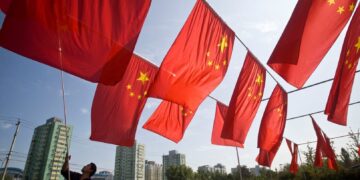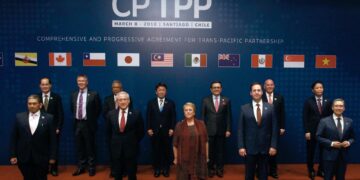By Dezan Shira & Associates
Over the next decade, China plans to invest up to RMB 1 trillion ($161 billion) into the domestic semiconductor industry as it seeks to become a global power in the sector. In recent years, Beijing has repeatedly stated that developing its own integrated circuit (IC) industry is a national strategic concern, which aligns with government goals to become stronger in areas such as high-tech, research and development, and intellectual property (IP), as outlined in China’s 13th Five-Year Plan through 2020.
China’s overtures in this sector offer potential rewards for investors and producers of semiconductors, as well as considerable risks and obstacles. The necessity for large-scale production and advanced research and development to compete and profit in this capital-intensive industry is a considerable hurdle. Additionally, concerns about IP protection and cybersecurity add another layer of risk to the industry.
China is the world’s largest purchaser of semiconductors, accounting for 56.6 percent of global consumption in 2014. Its consumption market grew at an 18.8 percent compound annual growth rate from 2003 to 2014, compared to 6.6 percent worldwide. This is due, in large part, to its position as the world’s largest exporter of electronics, where the use of semiconductors is essential. However, more than 90 percent of the semiconductors that China purchases are imported from the United States, South Korea, Japan, and Taiwan. As a result, China spends more money importing semiconductors than it does oil.
In order to shrink its trade deficit, the Chinese government has set forth ambitious goals to reduce its reliance on foreign technology and to become self-sufficient. Through its support of the domestic semiconductor industry, Beijing envisions 40 percent self-sufficiency by 2020 and 70 percent by 2025. This is part of China’s wider Made in China 2025 Policy, which aims to not only produce goods in China, but to transform the reputation of its products from cheap, unreliable, and unimaginative to precise, high quality, and innovative. Ultimately, the Chinese government aspires for its home-grown companies to be tier-1 industry leaders by 2030.
Government incentives
The semiconductor industry in China was fundamentally transformed in 2000 as part of the government’s 10th Five-Year Plan. Semiconductor companies, which were entirely state-owned, were privatized and the sector was classified as an encouraged industry for foreign investment. State Council Rule 18 introduced several tax incentives to spur growth in the industry in June 2000. While the industry grew over the following decade, its development failed to meet government expectations. Foreign companies’ concerns over China’s lack of IP protection, combined with government support spread too thinly across multiple industries, contributed to the less-than-expected results.
The policies of State Council Rule 18 were revised and built upon in State Council Rule 4, released in February 2011 and valid through 2017. Notable points include:
- Continuation of preferential value-added tax for software products;
- Business tax exemption for qualified software makers and IC design firms when engaging in software development and testing, information system integration, IC design, consulting, and operation and maintenance;
- Two-year exemption and three-year half exemption or five-year exemption and five-year half exemption on enterprise income tax for IC manufacturers who meet particular design and/or investment targets;
- Two-year enterprise income tax exemption followed by three-year half exemption for new IC design firms and qualified software enterprises launching in China;
- Reduced 15 percent and 25 percent tax rates for IC manufacturers who meet particular design and/or investment targets; and
- Preferential enterprise income tax for qualified companies engaging in IC packaging, testing or manufacturing of special materials, and manufacturers of special IC equipment.
The policies found in State Council Rule 4 differ from previous incentives in several ways. Tax incentives extend to back-end testing, assembly, packaging, and specialized material and equipment companies. There is greater emphasis on rewarding profit-making firms. By doing so, the government encourages mergers and acquisitions for successful companies to consolidate and grow by purchasing smaller and less profitable ones. Also, there is a clear effort to encourage high-tech research and development. The government offers greater benefits to companies that meet high technological standards, which drives domestic innovation and global competition.
There is a notable lack of support for discrete semiconductors in favor of more complex ICs as the former sector is seen as low-tech. Beijing is adopting a more market-based approach by having government investments in the industry managed by private equity firms and overseen by investors rather than run directly by the government itself.
Mergers, acquisitions, and partnerships
Mergers, acquisitions, and partnerships have been on the rise globally in an environment of slowing growth and rising costs for semiconductors, and Chinese companies have been particularly aggressive. In 2013, Tsinghua Unigroup, a government-affiliated private equity firm, purchased the Chinese mobile chipmaker Spreadtrum and RDA Microelectronics for a combined $2.7 billion. Intel later bought a 20 percent stake in the two companies for $1.5 billion, and is poised to invest another $5.5 billion in manufacturing semiconductors in China. Other chipmakers, such as Qualcomm and NXP, have established joint ventures with Chinese companies, and the former also established a China investment fund.
While China is dependent on foreign companies for its semiconductors, foreign companies are also dependent on the Chinese market. For instance, about half of Qualcomm and NXP’s revenue and 20 percent of Intel’s comes from China. As a result, many foreign companies are sharing technology and forming partnerships with Chinese companies to avoid being left out of the Chinese market. Through partnerships, joint ventures, and mergers and acquisitions, Beijing envisions its domestic companies acquiring the technology and expertise they need to become dominant global players.
This strategy has raised the suspicions of the US government, however. In February, Tsinghua Unisplendour, an affiliate of Tsinghua Unigroup, dropped a $3.8 billion agreement to buy 15 percent of the American company Western Digital after the Committee on Foreign Investment in the United States (CFIUS) opted to investigate the deal. CFIUS has the power to block international deals deemed detrimental to American security interests. This surprised many observers, who did not expect any interference with a minority deal in a relatively low-tech company. Earlier that month, Fairchild Semiconductor, which holds multiple US government contracts, rejected a $2.46 billion Chinese bid in favor of a lower offer from an American company, likely due to concerns over CFIUS. Similarly, dynamic random access memory chip manufacturer Micron Technology, whose chips are used in U.S. weapons systems, rejected an informal US $23 billion offer from Tsinghua Unigroup on the presumption that it would be blocked by CFIUS due to national security concerns.
These failed deals highlight the difficulties that Chinese companies may experience with foreign governments unwilling to share technology essential for national security, and holding concerns over Chinese cyber espionage, to go along with longstanding skepticism over IP protection in China.
The Chinese government appears committed to developing its domestic semiconductor industry, offering significant capital and various tax incentives to IC producers. In the long term, discerning investors may reap the benefits of Beijing’s support as it strives to become a global power in the industry. Meanwhile, existing producers can continue to see China as an affluent market for its goods, though increasingly at the cost of technology and licensing. However, the capital-intensive nature of the semiconductor industry, its emphasis on costly research and development, and the necessity for increased IP protection, are significant obstacles for China. Combined with the potential for the industry to become highly politicized, there is no guarantee that Beijing will achieve its ambitious goals.
This article was first published on China Briefing. Since its establishment in 1992, Dezan Shira & Associates has been guiding foreign clients through Asia’s complex regulatory environment and assisting them with all aspects of legal, accounting, tax, internal control, HR, payroll and audit matters. As a full-service consultancy with operational offices across China, Hong Kong, India and emerging ASEAN, we are your reliable partner for business expansion in this region and beyond. For inquiries, please email us at [email protected]. Further information about our firm can be found at: www.dezshira.com






























